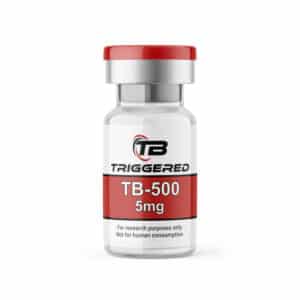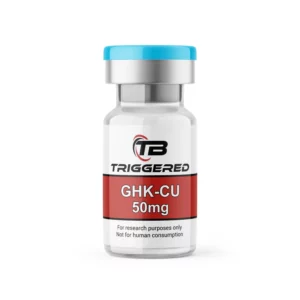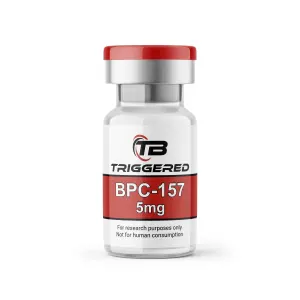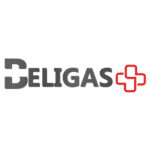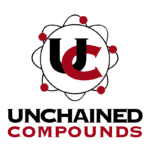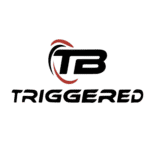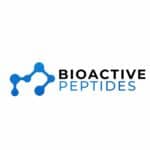Wounds Repair Peptides
In the vast realm of medical advancements, the discovery and utilization of specific peptides have proven revolutionary, especially in the field of wound repair and tissue regeneration.
While they’ve always been integral to various bodily functions, recent research has unveiled their remarkable potential in facilitating wound healing at an accelerated pace. This has not only opened the door for enhanced recovery but has also ushered in a new era of regenerative medicine.
For those seeking high-quality sources, you can now buy peptides in Thailand, a burgeoning hub for medical research and wellness tourism. This article delves deep into the world of wounds repair peptides, their mechanisms of action, and the potential they hold for the future of medicine.
TB-500
TB-500, or Thymosin Beta 4, is a peptide that has been of significant interest in the research community due to its purported benefits related to wound healing, inflammation reduction, and cellular repair. Here’s an in-depth review of this peptide, covering its features, benefits, limitations, and general consensus.
Features:
- Molecular Structure: TB-500 is a synthetic version of the naturally occurring peptide found in nearly all animal cells, Thymosin Beta 4. This peptide has a unique sequence of amino acids that give it its properties.
- Mode of Action: It is believed to play a role in the regulation of actin, a protein that forms (together with myosin) the contractile filaments of muscle cells. Through this, it may influence cell migration and thus wound repair.
- Administration: Typically, TB-500 is administered via subcutaneous injection.
Benefits:
- Wound Healing: One of the primary uses of TB-500 is for its potential to promote wound healing. This can be through increasing cell migration, which assists in repairing damaged tissue.
- Anti-inflammatory Properties: TB-500 is believed to help reduce inflammation, which can be beneficial not only for wounds but also for other conditions like tendinitis.
- Hair Growth: There’s some indication that TB-500 can promote hair growth, making it a topic of interest for those with alopecia.
- Flexibility Improvement: There are anecdotal reports of increased flexibility and reduced muscle spasms.
- Cardiac Cell Repair: Some studies suggest that TB-500 could play a role in repairing damaged heart tissue, though this research is still in its infancy.
General Consensus:
The scientific and user communities seem split on TB-500. On one hand, there’s a growing body of research pointing towards its potential benefits in tissue repair and inflammation reduction. On the other hand, the lack of extensive human trials means we still don’t have a complete picture of its efficacy and safety.
Many athletes and biohackers swear by its benefits, touting improved recovery and reduced pain. However, until more research is conducted, it remains a product that should be approached with caution.
GHK-Cu
GHK-Cu, or Copper Tripeptide-1, has gained attention in the skincare and medical community for its diverse range of potential benefits. From wound healing to anti-aging applications, the peptide has shown a capacity to influence a range of cellular actions beneficial for skin and tissue health. Let’s dive into a detailed review.
Features:
- Molecular Structure: GHK-Cu is a complex of the tripeptide Gly-His-Lys with copper (II). The addition of copper, an essential trace element for human health, is believed to enhance the peptide’s biological activities.
- Mode of Action: GHK-Cu is known to stimulate the synthesis of collagen, improve the function of fibroblasts, and also demonstrate anti-inflammatory and antioxidant actions.
- Administration: GHK-Cu is commonly found in topical formulations such as creams, serums, and lotions, though injectable forms for more advanced medical applications are also available.
Benefits:
- Wound Healing: GHK-Cu promotes the contraction of wound sites, stimulates the production of growth factors, and remodels tissue by activating the metalloproteinase system. This makes it a candidate for wound care and after-surgery treatments.
- Anti-aging and Skin Health: As a collagen booster, GHK-Cu can improve skin elasticity, firmness, and tone. This makes it a popular ingredient in many cosmetic formulations aimed at reducing the signs of aging.
- Anti-inflammatory: GHK-Cu has shown potential in reducing inflammation, making it beneficial for skin conditions where inflammation plays a part, such as acne or rosacea.
- Hair Growth: Preliminary research suggests that GHK-Cu might stimulate hair growth by blocking the hormone dihydrotestosterone (DHT), which causes hair loss.
- Scar Reduction: GHK-Cu can modulate the expression of genes associated with scar tissue formation, potentially leading to a reduced appearance of scars.
General Consensus:
Within the skincare community, GHK-Cu is often lauded as a breakthrough ingredient due to its myriad benefits. Many users report noticeable improvements in skin health and appearance after consistent use. The medical community also views it favorably, but with a more cautious stance, advocating for further research to confirm its broader applications.
BPC-157
BPC-157, also known as Body Protective Compound-157, is a peptide derived from a section of body protection compound (BPC) that can be found in human gastric juice.
It has garnered interest for its potential therapeutic effects, primarily for its regenerative potential in various tissues. This peptide is largely discussed in both the research community and among biohackers for its array of potential benefits.
Features:
- Molecular Structure: BPC-157 is a short peptide chain, consisting of 15 amino acids. It is a partial sequence of the body protection compound (BPC) derived from human gastric juice.
- Mode of Action: BPC-157 is believed to act by accelerating the rate of angiogenic repair. It might also influence several growth factors typically involved in angiogenesis and other regenerative processes.
- Administration: BPC-157 can be administered orally or via injection (subcutaneous or intramuscular). It has shown stability in gastric juice, allowing it to be effective when taken orally.
Benefits:
- Wound Healing: BPC-157 has been shown to expedite wound healing by accelerating the rate of angiogenesis. This can be applicable for both internal injuries (like ulcers) and external wounds.
- Anti-inflammatory Properties: The peptide has demonstrated significant anti-inflammatory activity, which can be useful in a variety of conditions from muscle sprains to inflammatory bowel disease.
- Tendon and Ligament Repair: BPC-157 might stimulate tendon fibroblasts, leading to tendon and ligament repair. This has sparked interest in the sports and athletics community.
- Neuroprotective Effects: Some studies have shown that BPC-157 has neuroprotective properties, which could be potentially applied in conditions like brain injury.
- Gastroprotective Effects: Given its origin from gastric juices, BPC-157 might also help in treating ulcers and inflammatory conditions of the gut.
General Consensus:
BPC-157 is often discussed in biohacker and fitness circles with a lot of enthusiasm. Many anecdotal reports point to rapid recovery from injuries and other therapeutic benefits. However, the scientific community is, as always, more conservative, awaiting more extensive human trials before forming a full endorsement.




